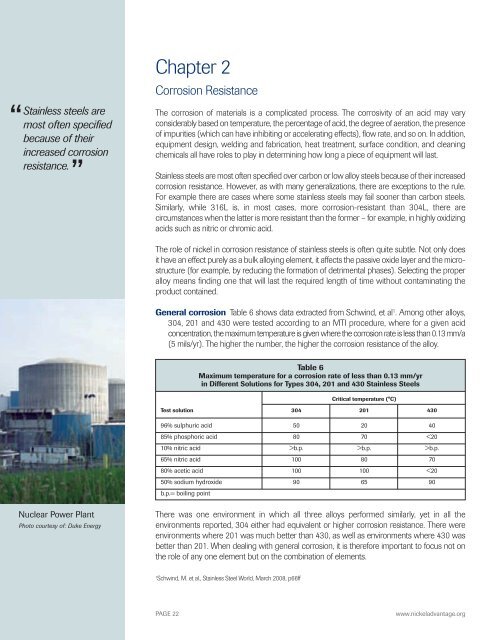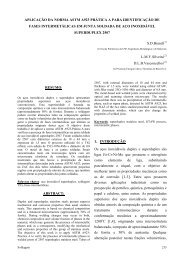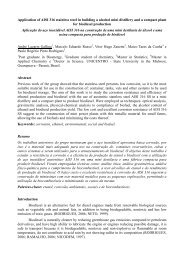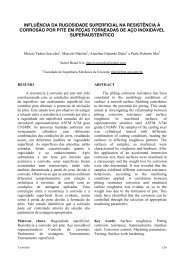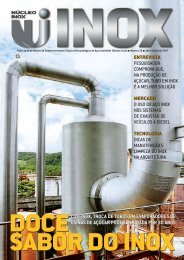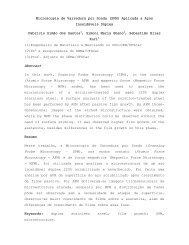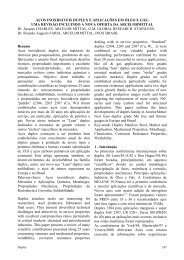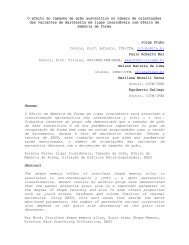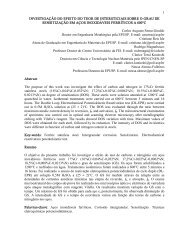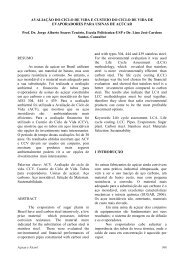The Nickel Advantage - Nickel in Stainless Steel - Eurometaux
The Nickel Advantage - Nickel in Stainless Steel - Eurometaux
The Nickel Advantage - Nickel in Stainless Steel - Eurometaux
You also want an ePaper? Increase the reach of your titles
YUMPU automatically turns print PDFs into web optimized ePapers that Google loves.
Chapter 1:<br />
Overview of nickel-conta<strong>in</strong><strong>in</strong>g<br />
sta<strong>in</strong>less steels<br />
Sta<strong>in</strong>less steels are<br />
most often specified<br />
because of their<br />
<strong>in</strong>creased corrosion<br />
resistance.<br />
“<br />
”<br />
Call Outs <strong>in</strong> Italics <strong>in</strong><br />
Medium<br />
Chapter 2<br />
Corrosion Resistance<br />
<strong>The</strong> corrosion of materials is a complicated process. <strong>The</strong> corrosivity of an acid may vary<br />
considerably based on temperature, the percentage of acid, the degree of aeration, the presence<br />
of impurities (which can have <strong>in</strong>hibit<strong>in</strong>g or accelerat<strong>in</strong>g effects), flow rate, and so on. In addition,<br />
equipment design, weld<strong>in</strong>g and fabrication, heat treatment, surface condition, and clean<strong>in</strong>g<br />
chemicals all have roles to play <strong>in</strong> determ<strong>in</strong><strong>in</strong>g how long a piece of equipment will last.<br />
Sta<strong>in</strong>less steels are most often specified over carbon or low alloy steels because of their <strong>in</strong>creased<br />
corrosion resistance. However, as with many generalizations, there are exceptions to the rule.<br />
For example there are cases where some sta<strong>in</strong>less steels may fail sooner than carbon steels.<br />
Similarly, while 316L is, <strong>in</strong> most cases, more corrosion-resistant than 304L, there are<br />
circumstances when the latter is more resistant than the former – for example, <strong>in</strong> highly oxidiz<strong>in</strong>g<br />
acids such as nitric or chromic acid.<br />
<strong>The</strong> role of nickel <strong>in</strong> corrosion resistance of sta<strong>in</strong>less steels is often quite subtle. Not only does<br />
it have an effect purely as a bulk alloy<strong>in</strong>g element, it affects the passive oxide layer and the microstructure<br />
(for example, by reduc<strong>in</strong>g the formation of detrimental phases). Select<strong>in</strong>g the proper<br />
alloy means f<strong>in</strong>d<strong>in</strong>g one that will last the required length of time without contam<strong>in</strong>at<strong>in</strong>g the<br />
product conta<strong>in</strong>ed.<br />
General corrosion Table 6 shows data extracted from Schw<strong>in</strong>d, et al 1 . Among other alloys,<br />
304, 201 and 430 were tested accord<strong>in</strong>g to an MTI procedure, where for a given acid<br />
concentration, the maximum temperature is given where the corrosion rate is less than 0.13 mm/a<br />
(5 mils/yr). <strong>The</strong> higher the number, the higher the corrosion resistance of the alloy.<br />
Table 6<br />
Maximum temperature for a corrosion rate of less than 0.13 mm/yr<br />
<strong>in</strong> Different Solutions for Types 304, 201 and 430 Sta<strong>in</strong>less <strong>Steel</strong>s<br />
Critical temperature (°C)<br />
Test solution 304 201 430<br />
96% sulphuric acid 50 20 40<br />
85% phosphoric acid 80 70 b.p. >b.p. >b.p.<br />
65% nitric acid 100 80 70<br />
80% acetic acid 100 100


